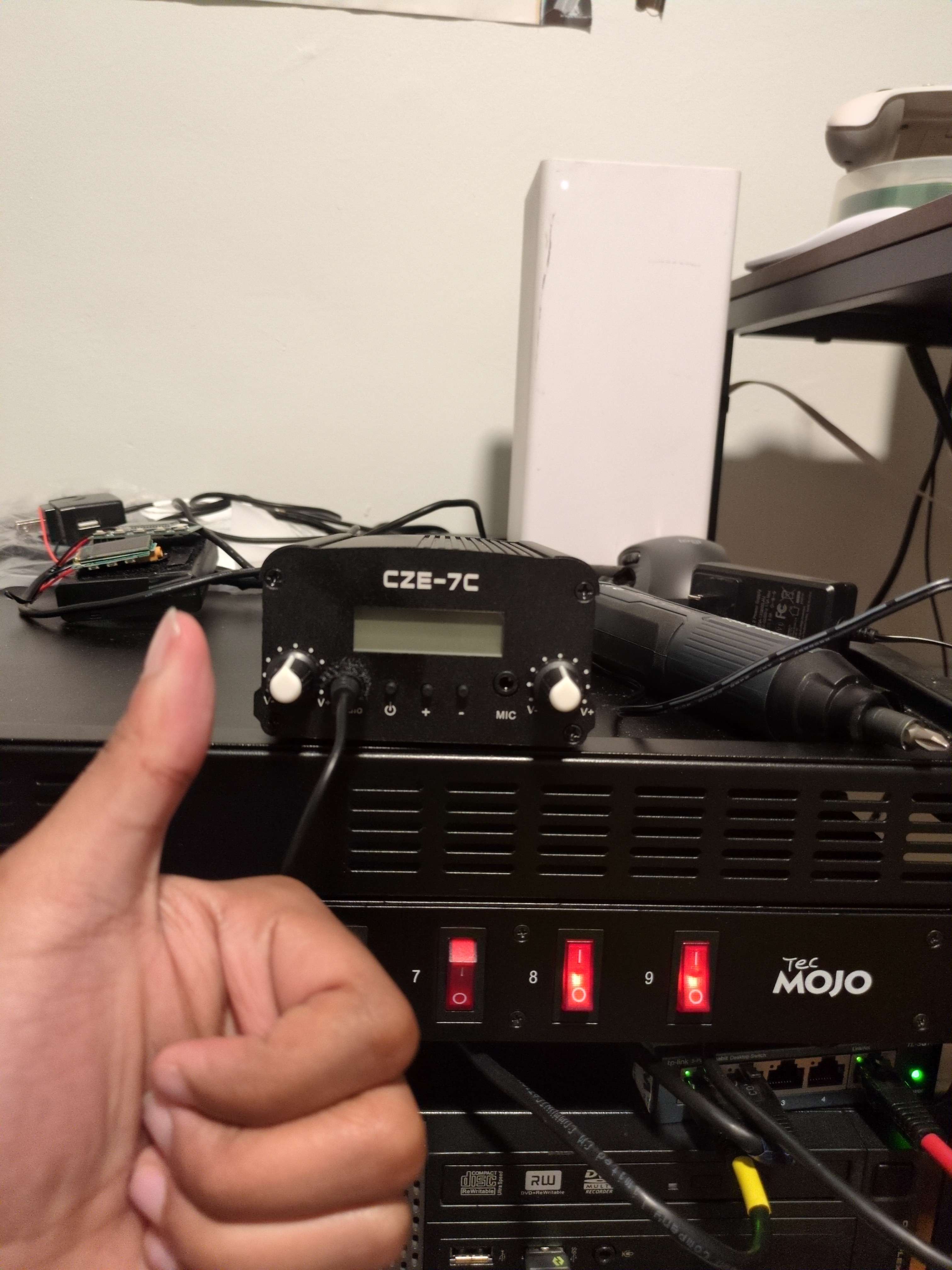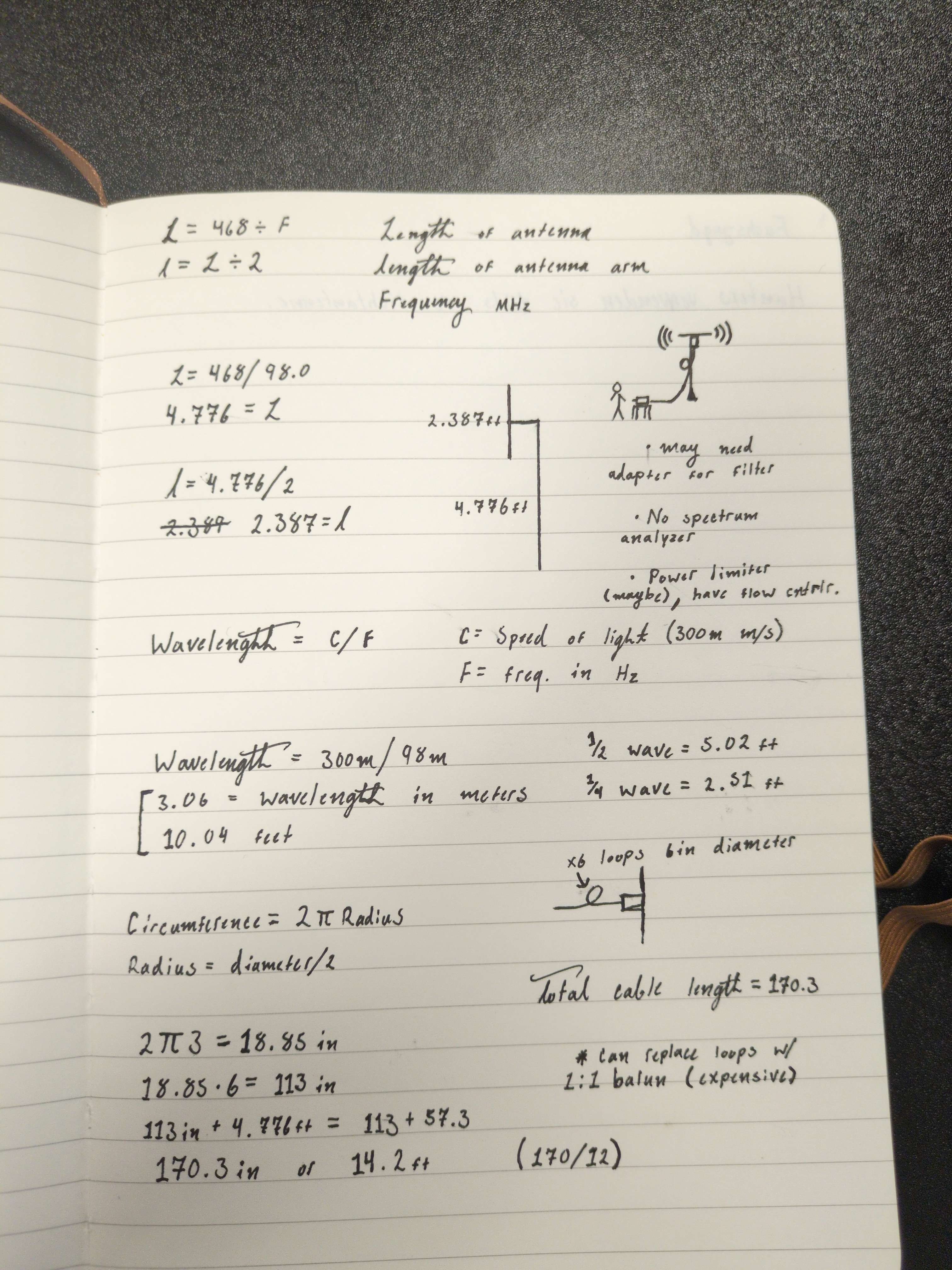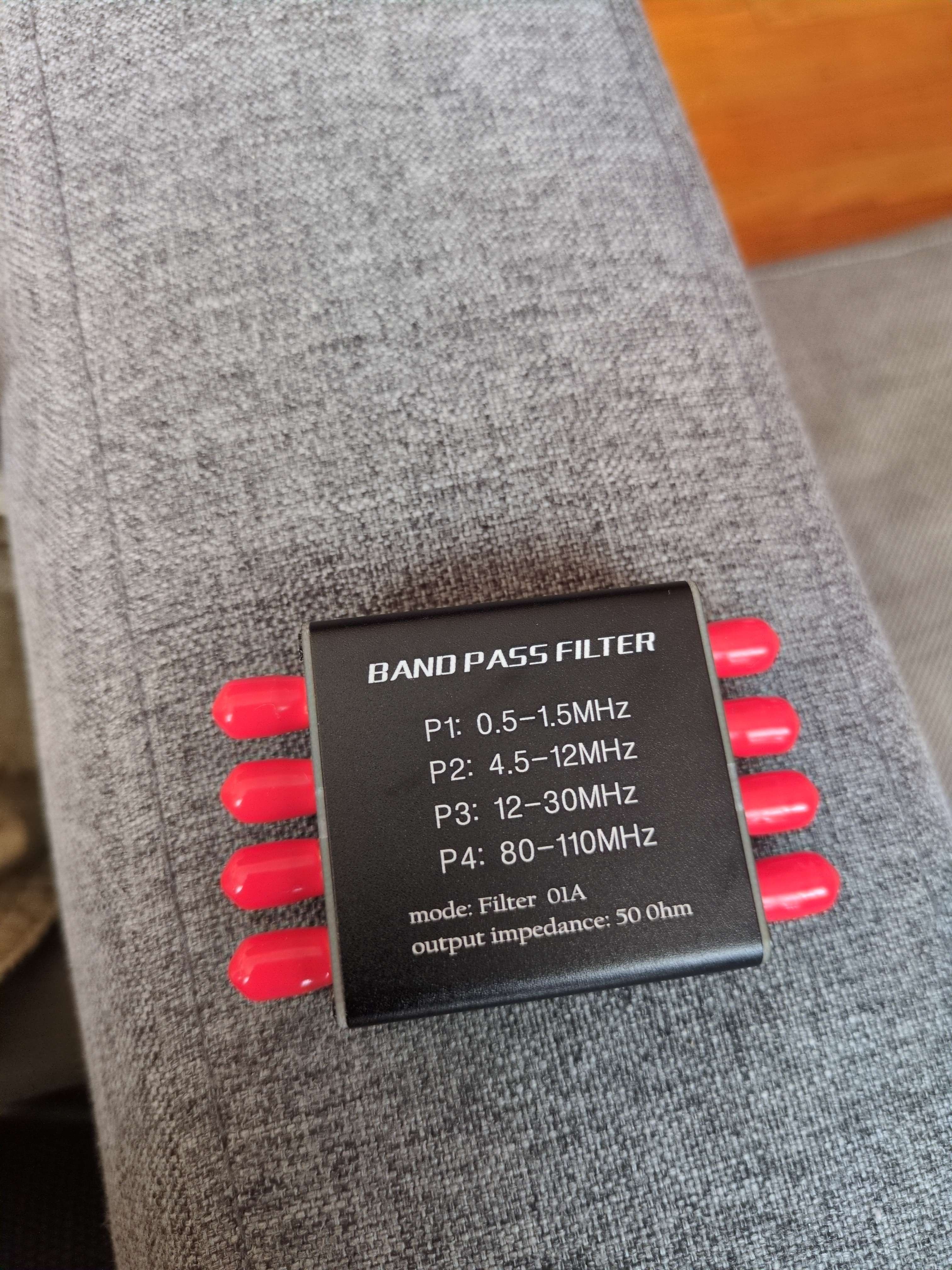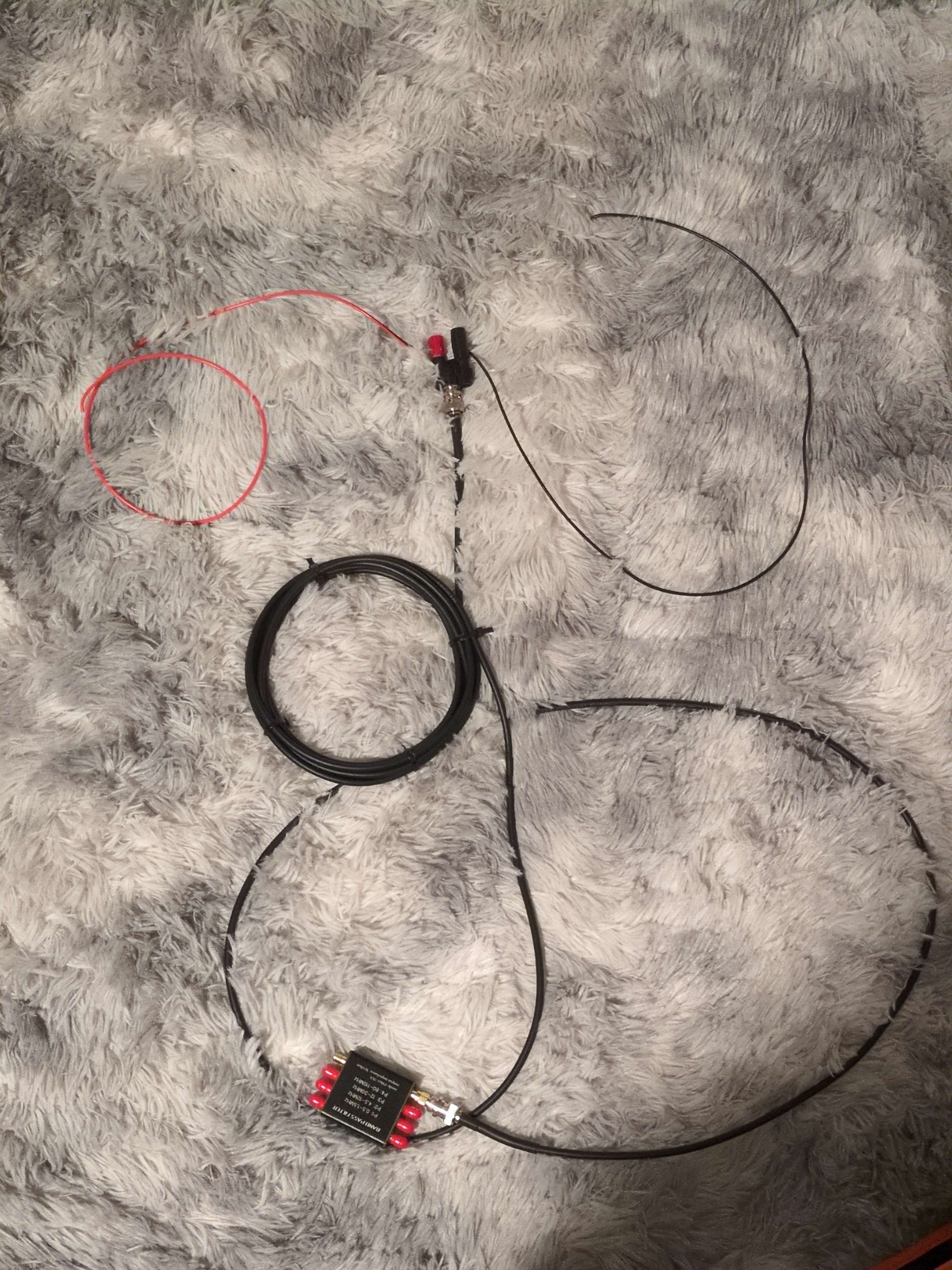Like most people in the early 2000s, I grew up listening to the radio ALL the time. Some of my earliest memories are of being scared shitless by horror movie and Halloween attraction radio ads, to be matter-of-fact. So when I sat down to lend an ear to modern radio to see what I’ve been missing after migrating to streaming platforms like everyone else in the world, I was devastated to see (or hear, rather) that FM radio is just filled with the auditory version of pop-up ads you’d find on an illegal website and music that was not only repetitive but invoked no emotion upon hearing it! Gone are the days of Carly Rae Jepsen and Madonna moving even 250 lb black guys to spontaneous outbursts of song while driving. To make matters worse, morning talk shows assault your ears with their moronic—err, I mean INSIGHTFUL—conversation on critical points with their highly academic “would you rather” and “what would you do?” scenarios in their 17th-century salon-level forums.
Almost immediately, I had heard enough and was driven to fulfill my duty to ignite change in the world. After some brief research, I found out that the price to have your own radio station is around 100,000 dollars. Needless to say, the dream was crushed on the spot, but moments later, a lightbulb went off. In true revolutionary fashion, I decided that my only option was to turn to other less-than-standard means. I was no stranger to the concept of pirate radio, but I had never tried it myself, partly because of the consequences of getting caught, should a pirate shirk their cautionary tasks. This, however, is an issue that I cannot let go unresolved! I found a quick tutorial for a basic, short-range transmitter and followed it with great success, being the smartypants I am. Here’s what I ended up with afterwards:

What you’re looking at here is a Bluetooth module (top) connected to an FM transmitter module (bottom) via a 3.5mm cable, which will allow us to send audio from any Bluetooth-capable device to our little contraption. That audio is then transmitted from the antenna (right) to nearby radios that are tuned in to the same frequency we’re broadcasting on. I’ve chosen 98.0 in honor of the game Oxenfree, which is what introduced me to RF engineering as a concept. I highly recommend you guys check it out; it’s pretty good. Anyways, to power our doohickey, we have TWO—count ’em, TWO—power sources. The first is a battery pack (the black box behind the modules) that uses 4 AA batteries. This is a bit of a problem because who buys batteries still? I have a few rechargeable ones, but no thank you, sir. This is why our second power source is a micro USB port on the side of the transmitter module. Regardless of which power source we use, we have to make it so that both modules receive the power they need, which is why they have the red and black wires soldered together so that they simply share the power being drawn. With this bad boy, we can reach a whopping 15 feet before the signal drops and we just hear static. I know, not great, BUT when I sat it on the bookshelf to be displayed and collect dust, I had the funky idea to just pump extra power into it, and unsurprisingly, it worked! Not only was the range longer, but the audio was actually clearer as well. HOWEVER, there was a very serious unintended effect: there was SIGNIFICANT interference with nearby frequencies, and any radios in range could pretty much only hear my broadcast, no matter the frequency they were set to. Everything that wasn’t me was merely static or somehow completely silent, as if it was picking up waves, but no audio was playing. This was even true for the AM band, which is a huge no-go for us, since AM is used for a lot of emergency services, and messing with reception on those frequencies could stop people’s access to communication with those services. That being said, theoretically, one could add a band-stop filter to cut out the bands they don’t want to affect, effectively repurposing the device as a sort of short-range radio jammer, but alas, that isn’t on the menu for today. Oh, also, while we pumped up the power usage, my poor soldering on the transmitter module caused the entire thing to heat up quite a bit, and since the current design doesn’t include a cooling apparatus, it would be best to never do this again lest we ignite the whole thing or something silly like that. I think this is a great starting point, nevertheless, and to move forward, we need to organize our key requirements for scaling the project up.
Firstly, portability is a must. The FCC suffers bureaucratic processes, which we can use to our advantage to avoid getting fined. Essentially, they will most often send a cease and desist to the location we’re broadcasting from once (and if) a hardcore loser reports us enough times, and in the event that happens, we can simply move. Even if it’s still the same bloke broadcasting, the due process must be followed. This means that being able to unexpectedly broadcast anytime and anywhere makes it more difficult for losers to find us to report us in the first place, and if they do, we can just move elsewhere and perhaps even collect the cease and desist as a sort of trophy. I imagine that you’d get 1 loser per 1,000 potential listeners because, for one, it means people are listening, and the number of losers in a city is much lower than the number of normal people, so just estimating, we’ll be fine.
Secondly, we need a good antenna. If you want something done right, you either fork over some serious cash or do it yourself, and I like to save my cash for more important things like steam games and fursona commisions. Making our own antenna is just a matter of a bit of math and maybe 50 dollars in materials. We even get full control over the type of antenna we use as well, which is really helpful since we could design different ones to better fit specific locations since we'll be moving about.
Thirdly, we need to ensure quality. Like I mentioned before, our starter transmitter suffered from a couple small problems like short broadcast range and poor audio quality (before nearly blowing it up with high voltage). We will need a filter and a transmitter that doesn't look like a junkyard scrap-traption.
For the first bit, I actually have a good and very simple solution, which is to just make a setup that can mount onto the pannier rack of my bike. This means that we would not only be able to take everything with me and just bike to some random location of our choice, but we could also technically broadcast from the bike itself if a small solar battery or something along those lines were available. I hope it was implied, but this setup would also be easily unmountable so that if the location has power, we could just plug in and cook up on their bill, which earns a resounding “hell yeah” from me.
As for transmitters, I managed to get a cheap CZE-7C transmitter for about 75 dollars, with the only problems being that it didn’t include a power cable or antenna, which is fine with me since what kind of dork doesn’t have spare assorted cables for this exact situation? We’re also making our own antenna, so the lousy one it came with would have been condemned to permanent storage anyways. The CZE-7C has mixed testimonials, but I’m really making this intern budget stretch right now, so let’s pretend it’s good. Judging from the 7W power output rating, I think we can get some good range by taking into account some key factors such as frequency, altitude, weather, and antenna type.

To address frequency, it’d be counterintuitive to constantly change frequencies because our listeners will not only have to be left guessing WHEN we’ll broadcast, but WHERE as well. While this might be a fun game to some, I’d rather not lose out on the folks who are less inclined to hunt for some good tunes. It’s common practice for pirates to use this ideology, as it’s simply inconvenient to have to channel hop. Therefore, 98.0 will be OUR station.
Altitude is another thing we’ll have to consider because radio waves are still somewhat of a physical phenomenon, so we need to make sure they can go further without much obstruction. The easiest way to do that is by ensuring our antenna is up in the open air. This could be a tall building, some other sort of tower, or even just a point in the city where the elevation is a little higher, like on a big rock at a park. Obviously, I can’t just tell you guys my ideas for specific locations, but if you want to follow in my footsteps, just think of somewhere you could shine a laser as far as you can without hitting something.
I can't control the weather.
Choosing the right antenna is something that’s a little situational. For example, a directional antenna (or Richtantenne, so that I can get my German word of the day done) is good for sending forth our earworms in a specific direction. A dipole antenna is super cheap and easy to make, AND it is omnidirectional. This is why most smart fellas opt to use these. TLDR; Dipoles are great. The only thing not great about dipoles are the size. Do you remember that math we were talking about earlier? Well, take a look at this:

Alrighty, here’s a quick rundown of what you’re looking at. The topmost equation is the formula to calculate the length of our antenna. The length is 468 divided by your desired frequency. This puts us at 4.776 feet of coaxial cable needed FOR NOW. I say that because if we jump down a bit to the bottommost equations, we see me calculating for 6 loops of cable for some reason. This is because by looping the cable, we can improve the quality a little and reduce interference by creating a current choke. This is important because since we’re taking steps to not step on anyone’s toes, we want to make sure no one steps on ours as well. In RF, tiny things like poor soldering, power lines, and even proximity to people can have some funky effects on our signal. Have you ever had a radio in your bedroom and noticed that it’s a little staticky, and then when you go to make sure the radio is properly tuned, the static stops and you’re left rolling your eyes because you just got up for no reason? That’s the kind of stuff we want to avoid. In my notes, I made a little point saying that the loops can replace the need for a 1:1 balun entirely, but upon doing some concluding research, that wasn’t exactly true. HOWEVER, we’re still not using one because we’re already pushing the project budget as is right now. Any more expenses and I’ll have no money to buy takeout for lunch instead of meal prepping. On top of the antenna (well, technically on the bottom) is our 88-108 MHz filter.

We need this to avoid dancing our way into AM territory. And while I don’t mind the idea of drowning out weak ass conservative radio, I don’t want my signal going all over the place because that’s just sloppy. Anyways, the 6 loops are going to add about 113 inches of cable to our total, bringing us to a grand total of 14.2 feet of cable needed. I ordered 15 feet because 14.2 is a little too specific for Amazon. I’ll also not be cutting the cable down to size because it’s not THAT big of a difference. All in all, here’s what we have for an antenna:

Now is where the hard part of the project comes into play. You see, I could just slap together a playlist and call it a day, but guys... this is our PREMIER on the airwaves! We have to really do it up, y’know? I think it’d be pretty sweet to do a live dj set to commemorate the occasion. This part is a little difficult because I’m not that great when it comes to the artsy parts of projects, which is why I sometimes need to outsource those bits to friends or strangers. This time is a little different, though, because I didn’t do all this to hear someone else’s music; the first broadcast has to be MY stuff. I mean, think about it: when some random fella listens to our station, they’re not gonna think, “Hm, I reckon that DJ V fella probably worked hard on that transmitter setup.” They’re gonna be like, “Yeah, these tunes are pretty good, innit?”
I spent a couple days trying out different software and ended up with a mix I was ok with sharing. It might not be premium, but for a first timer, I really have to pat myself on the back. I'll create a archive of mixes as (and if) I make more, but for now, here's my premier set! POW!
Additionally, here is a link to the tutorial I followed for the very first transmitter: KABANG! if it's not available anymore, let me know, as I (being the nerd I am) archived it. Go and do as I have!
Ok so this is the conclusion of this article. I have no way of knowing how many people actually heard me broadcasting, and maybe I'll make more stuff for it eventually, but I think I had a good bit of fun with this one, and I know a few people heard the mix because I told them to check it out and they did because they love me. Before going insane, Kanye said that "one good girl is worth 1000 bitches" so judging by that math, the 3 ladies I know who listened means that at LEAST 3000 people listened, and those numbers aren't too shabby for a pirate. In all serious though, guys, few pirates make it to objective notoriety, so I don't really expect to blow up or anything like that. I'm very happy with the nonzero amount of traction I managed to get so far. To any folks in the Philadelphia area, feel free to try and catch me live, and be sure to send me an email to let me know you're listening!